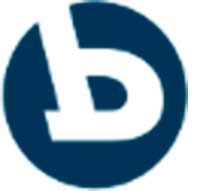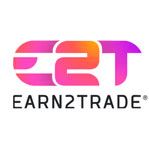Prop Firm Review
Proprietary trading firms (prop firms) fund skilled traders with their capital in exchange for a share of the profits. Instead of risking your own money, you trade a firm-funded account under set risk rules. This model allows talented traders, who lack large capital to use the firm’s resources and earn significant income. Many prop firms offer traders 70–90% of profits, so if you perform well, you keep most of the gains. In return, you must prove yourself—usually by passing an evaluation or “challenge” phase with strict profit targets and drawdown limits to ensure safe, profitable trading. Prop trading isn’t a get-rich-quick scheme—most newcomers fail the evaluation and lose signup fees if targets aren’t met. However, traders with consistent performance can grow without risking their savings.
Prop firms differ by markets and operations. Some focus on forex; others, on futures, stocks, or crypto. Choose a firm that matches your trading instruments and style. For example, a futures index trader prefers a firm with CME futures, while a currency trader seeks a forex prop firm. Below, we break down futures vs. forex trader funding, discuss required trading software, and note key factors when comparing prop firms.
Choosing a Prop Trading Firm: Key Factors
Not all prop firms are equal. When reading prop firm reviews or comparing your options, pay attention to several core factors that determine a firm’s quality and fairness:
- Funding Capital & Scaling: Check how much capital the firm offers and if you can scale over time. Leading firms provide accounts from $10K up to six figures, increasing as you reach profit milestones. Ensure the capital matches your goals, and see if there’s a clear scaling plan.
- Profit Split: This is the percentage of profits you keep. Industry standards let traders keep 80% to 90% of profits. Higher splits mean more for you. Beware of firms with low splits or hidden fees eating into your share.
- Payout Process: A prop firm’s promises mean little if you can’t withdraw earnings. Research payout schedules and methods—do they pay weekly or monthly, and are there minimum thresholds? Reliable firms pay promptly. Reports of delayed or difficult withdrawals are red flags. Top firms state payout timing and methods clearly.
- Evaluation Rules: Most firms require passing an evaluation before funding. Scrutinize these rules. Profit targets should be attainable (often 5–10% gain), and drawdown limits should be reasonable. Challenges with high profit targets or short timeframes may set traders up to fail. Find firms whose rules match your trading style—if you need to hold trades overnight or during news, ensure these are allowed.
- Trading Platform & Tools: Ensure the firm supports a trading platform you are comfortable with, and check compatibility with any specific tools or plugins you use. Most forex-centric prop firms offer MetaTrader 4 or 5, cTrader, or sometimes TradingView integration, which accommodate both discretionary and algorithmic trading. Futures-focused firms often support NinjaTrader, TradingView, or proprietary web interfaces; confirm that the platform allows your favored order types, indicators, or automated strategies such as Expert Advisors (EAs). The platform should be stable, reliable, and allow you to customize your trading setup as needed. A good prop firm will often provide an online account dashboard with detailed risk metrics—including drawdown tracking and profit milestones—to help you monitor progress and stay within the rules.
- Markets Offered: Ensure access to your preferred markets—forex, indices, commodities, crypto, or futures. Some firms are forex-only; others offer broader instruments like indices and metals (via CFDs) or exchange-traded futures. If you specialize in a market, pick a firm that supports it, so you don’t have to change strategy.
- Support and Reputation: Don’t overlook these factors. Prop trading can hit snags—like a server outage on NFP day, or questions about rules—so choose a firm known for responsive support. Since most prop firms are unregulated, trust depends on their track record and reputation. Look for firms with consistent payouts and positive reviews. A strong, active trader community signals engagement and reliability. Firms with transparent rules and supportive communities inspire confidence.
By weighing these factors, you can filter flashy pretenders from true trader-focused prop firms. Next, let’s examine the two main types of prop programs—futures-focused and forex-focused—and how they differ.
Top Futures Prop Firms (Futures Trader Funding)
Best for Futures Traders - Apex Trader Funding
Promo Code: UQZQSHZW (80% off )
Rating:
🌕🌕🌕🌕🌖 (4.8/5.0)
Best for Scalability- Alpha Futures
Promo Codes: dtinsights000620 (15% OFF)
Rating:
🌕🌕🌕🌕🌗(4.5/5.0)
Best for Customized Programs - My Funded Futures
Promo Code: DTINSIGHTS
Rating:
🌕🌕🌕🌕🌗(4.6/5.0)
Most Affordable with Great Flexibility - Bulenox
Promo Code: dtinsights (91% OFF)
Rating:
🌕🌕🌕🌕🌗(4.7/5.0)
Best for Traders That are Still Learning
Get 50% OFF with promo code: DTI
Rating:
🌕🌕🌕🌕🌗(4.8/5.0)
Futures prop firms fund traders in futures contracts, such as equity indices, commodities, or other exchange-traded products. These firms let day traders access more capital. You’ll usually trade in a simulator with real-time data and follow rules like daily loss and position size limits. Successful evaluation (either “combine” or “challenge”) leads to a funded account with firm capital.
Characteristics of Futures Funding: Futures contracts have fixed lot sizes and margin requirements, which means they often require larger capital per trade compared to forex. Even “mini” or “micro” futures can carry significant notional value, so managing risk is critical. Prop firms usually set a maximum drawdown (total loss limit) for futures traders and sometimes a daily loss limit. Some newer firms have made the rules more flexible.
For example, Apex Trader Funding, a popular futures prop firm (see more details on Apex Trader Funding’s website), does not impose a daily drawdown limit on its funded accounts. This allows traders to weather intraday swings as long as they stay within the overall drawdown. Futures markets also have defined trading hours with short breaks (e.g., an exchange maintenance period each day), unlike forex, which trades 24/5. You’ll need to plan around these hours; the upside is that during active sessions, futures can have high liquidity and volatility, offering plenty of trading opportunities.
Evaluation Process: Most futures prop firms use either a one-step or two-step evaluation. A well-known example is Topstep (learn more on the Topstep website), which pioneered the concept with its two-step “Trading Combine.” In Topstep’s combine, you must hit a target profit (with no excessive losses) in Phase 1 and then repeat consistent performance in Phase 2 to get funded. Topstep is known for a trader-friendly model – for instance, funded traders keep 100% of their first $10K in profits and 90% thereafter. They also emphasize risk management and even offer educational resources to help traders improve.
Other firms, like OneUp Trader or Earn2Trade (visit OneUp Trader and Earn2Trade for more info), similarly evaluate futures traders over a trial period, often around 15–30 trading days, with rules on maximum drawdown (which may trail your gains) and profit targets around 6-10%. It’s important to read each firm’s rulebook: some will require you to close positions before major news or before the session closes, and almost all prohibit holding trades over weekends (since futures markets are closed then).
Platform and Fees: Futures prop firms usually partner with technology providers to give you access to exchange data and order execution. Many support NinjaTrader – a popular platform among futures traders (see the NinjaTrader website), or allow trading via TradingView integration or a proprietary web platform. You’ll often be using a simulated environment with live market data. Keep in mind that exchange data feeds (for CME, etc.) often carry a monthly fee; some prop firms will require you to pay this data fee once you’re in a paid evaluation or funded (around $100+ for a full CME bundle, for example), whereas others might cover it or offer a discounted rate.
Commission costs are another factor: futures trades incur exchange fees and commissions per contract. Reputable prop firms are transparent about these trading costs during the evaluation and after funding. Overall, futures prop trading is usually favored by traders who already have some experience – the contracts can yield large profits quickly, but they can also hit your drawdown fast if you’re not careful. That said, the profit potential is significant. Apex Trader Funding, for example (see more on Apex Trader Funding’s website), offers accounts with notional sizes ranging from $25,000 to $300,000. Traders keep 100% of the first $25K in profits and 90% onward. Such funding programs, combined with the leverage inherent in futures, allow a skilled futures trader to substantially amplify their earnings through a prop firm.
If you’re a futures specialist (trading products like stock index futures, Treasuries, or commodities), a futures-focused prop firm might suit you best. You’ll want to choose a platform with reasonable rules and fees, one you’re comfortable with, and a proven track record of paying out to successful traders. Firms like Topstep, Apex, and others in this space have slightly different offerings – some cater to quick scalpers with one-step challenges, while others provide a structured path for more methodical traders. Be prepared for a stringent risk-management environment; success in these programs requires as much discipline as strategy.
Forex Prop Trading Firms (Forex Trader Funding)
Funded Trading Plus
The 5%ers
FundedNext
FTMO
Forex-focused prop firms are currently the most common type, reflecting the massive popularity of foreign exchange trading among retail traders. Forex prop firms typically fund traders to trade currency pairs and often a range of CFD (Contract for Difference) markets like stock indices, gold, and cryptocurrencies. These firms appeal to traders for a few key reasons: forex markets are open 24 hours on weekdays, allowing flexible trading schedules, and position sizes can be adjusted in very fine increments (microlots), making it easier to control risk even with small accounts.
In a prop trading context, the flexibility of forex means firms can accommodate traders of varied experience levels – from those just starting out to seasoned pros – by offering accounts as small as $5K or as large as $200K+.
Typical Programs: Most forex prop firms use a two-step evaluation model, pioneered by firms like FTMO. In a two-step challenge, Phase 1 might require, say, +10% profit in 30 days with <10% max drawdown, and Phase 2 might require +5% in 60 days with the same or tighter drawdown, just as an example. Upon passing both phases, you’re offered a funded account. FTMO is renowned for this structured evaluation and its supportive environment for traders. They offer funded account sizes up to $200,000 with profit splits starting at 80% (and scaling up to 90% for consistent performers). They also provide coaching and feedback, reflecting a focus on trader development. Many other firms have followed suit with similar two-step challenges (such as The Funded Trader, MyFundedFX, and others), sometimes tweaking rules on time limits or profit targets to differentiate themselves.
Recently, some forex prop firms introduced one-step evaluations or “instant funding” options. For example, FundedNext has an Express model that skips the second step, and a few firms allow traders to buy directly into a live funded account without any demo challenge (albeit for a high fee and usually with a lower profit split). These alternatives cater to experienced traders who are confident in their skills or want to avoid demo trading stages. However, the classic two-step remains the most prevalent format in forex funding programs due to its balance of risk control and opportunity for the trader.
Trading Conditions: One thing to note about many forex prop firms is the trading environment they provide. Independent prop firms often have you trade on demo accounts connected to their own brokerage or liquidity provider. Your trades aren’t always executed in the real interbank market; instead, the firm is monitoring your performance on a simulator. This is not necessarily a problem – if you profit, the firm pays you out of its coffers – but it means conditions can be slightly different from a live account (e.g., some prop firms might have spreads or slippage that differ from a typical broker).
Broker-backed prop firms are an exception: these are firms partnered with regulated brokers, so when you trade, you’re effectively trading on a real account with that broker. For instance, Blueberry Funded and DNA Funded are tied to brokerage infrastructure, offering direct market execution and real-time liquidity. The benefit of broker-backed models is more transparent pricing and often faster execution. The downside is that these firms might be stricter on compliance (since they follow brokerage regulations) and sometimes have slightly higher costs (spreads/commissions) similar to a normal brokerage account. Regardless of the model, top forex prop companies ensure traders have competitive spreads (many advertise EUR/USD spreads near 0 with a small commission) and sufficient leverage (commonly 1:100) to trade effectively.
Risk Management and Profit Sharing: Forex prop firms enforce risk rules just as futures ones do – typically a maximum daily loss (often around 5% of account) and a max overall drawdown (around 10-12%). These rules can vary: some firms use an equity-based drawdown (tracks open trades) while others use balance-based or trailing drawdowns. It’s crucial to understand each firm’s definitions to avoid accidental violations. On the positive side, the profit-sharing in funded forex accounts is very generous. Most firms start traders at an 80% profit split (you keep 80% of profits, the firm gets 20%) or even higher.
The best firms increase this split to 85% or 90% after you’ve proven consistent or after a certain number of payouts. For example, FTMO’s profit split can reach 90%, and many competitors now offer similar or even 100% of the first payout as a bonus. Keep in mind, some firms charge a refundable fee to take the challenge. If you pass, they refund it; if you fail, that fee covers the firm's costs. Always check if the fee is refundable and if there are any monthly costs for using the funded account (most don’t charge monthly for evaluation accounts, but a few firms might for certain account types).
Choosing a Forex Prop Firm: With literally dozens of forex prop firms on the market by 2025, how do you choose the right one? Focus on trust and trader feedback. Since this space is not tightly regulated, some firms have collapsed or stopped paying traders in the past when their model proved unsustainable. Look for firms with a long track record of operations and good reviews regarding payouts. Big names like FTMO have years of history and thousands of successful traders, which provides confidence. Also compare the fine print: allowed trading styles (are strategies like news trading, scalping, or using EAs allowed?), withdrawal frequency (some allow bi-weekly withdrawals, others monthly), and any scaling plans (many firms will increase your account size by a certain percentage if you don’t hit max drawdown and achieve a profit target over a few months).
Ultimately, a forex prop firm is sometimes the best route for beginners or intermediate traders to start with, because of the flexibility and lower cost barriers: you can trade micro-lots, the evaluation fees are usually a few hundred dollars (for example, a $100K account challenge might cost ~$500), and you can trade at any time of day to fit your schedule. If you have a solid forex strategy, a prop firm can significantly amplify your returns by giving you a large funded account once you prove yourself.
Trading Platforms and Software Requirements
To participate in a prop firm program – whether futures or forex – you will need to use the trading software/platform supported by that firm. In other words, the “software needed to trade” in a prop context is simply a brokerage trading platform (and possibly some add-ons) that meets the firm’s requirements. Most prop firms will provide credentials for a specific platform once you sign up for a challenge. Here are some common platforms and tools you’ll encounter:
- MetaTrader 4 (MT4) / MetaTrader 5 (MT5): These are by far the most popular trading platforms provided by forex prop firms. MetaTrader is user-friendly and supports automated strategies via Expert Advisors (EAs). If you’re joining a forex-focused prop firm, there’s a very high chance you’ll be trading on MT4 or MT5. Ensure you’re familiar with the platform’s basics (placing orders, setting stop-loss and take-profit, etc.), and if you use custom indicators or EAs, confirm that the firm allows them (most do, as long as the strategies aren’t abusive or cheating the system).
- cTrader: Some prop firms offer cTrader as an alternative to MetaTrader. cTrader is another forex/CFD platform known for its clean interface and advanced order capabilities. If you prefer cTrader, check the firm’s platform options – for example, FTMO and a few others support it alongside MT4/5.
- TradingView Integration: An increasing number of firms allow trading through TradingView, a web-based charting platform, thanks to broker integrations. This can be especially handy if you love TradingView’s charting tools – you can execute trades directly from the TradingView interface, and they route to the prop firm’s brokerage. Both some forex firms and futures firms now offer TradingView connectivity. For instance, Apex (futures) lets traders use TradingView or NinjaTrader as they prefer.
- NinjaTrader & Other Futures Platforms: For futures prop firms, NinjaTrader is very commonly used. It’s a powerful platform for futures with advanced charting and order types. You might also come across R Trader Pro (Rithmic’s own platform) or a web platform like Trading Evaluator. In any case, futures trading software typically requires a data feed login (provided by the prop firm) and has exchange-specific features. It’s a good idea to practice on a simulator for any new platform to avoid order entry mistakes.
- Risk Dashboards: In addition to the trading platform itself, good prop firms offer an online dashboard or portal where you can see your account metrics – daily P/L, max drawdown remaining, rules status, etc. This isn’t something you “install,” but it’s software provided by the firm to help you monitor compliance. A prop firm’s dashboard can alert you if you violate a rule or hit a threshold. While not all firms have fancy dashboards, it’s a very helpful tool when they do, because staying within the rules is your responsibility.
- APIs and Automation: If you are an advanced trader who uses custom software or algorithms, check if the firm provides an API or supports automated trading. Some broker-backed firms might allow API access or third-party trading bots, whereas others might restrict certain high-frequency strategies. Always clarify this in the firm’s FAQ – even though the platform might technically support EAs or algorithmic trading, the firm’s rules may prohibit strategies like arbitrage or rapidly copying signals.
Software Setup: Getting started usually involves downloading the platform (if it’s desktop-based like MT5 or NinjaTrader) and logging in with credentials the firm gives you for the evaluation account. You’ll need a reliable computer and internet connection – this is obvious but crucial, as platform disconnects or PC crashes won’t typically earn you any leniency if they cause a rule break. It’s wise to set up any needed alerts (for example, in MetaTrader, you might set an alert if you’re nearing your daily loss limit) to help manage your risk in real time.
In summary, the software needed to trade with a prop firm isn’t much different from trading your own account elsewhere. The key is ensuring the firm supports your preferred platform and that you’re comfortable using it under live conditions. If you have a specific software requirement (say, you can only trade using a Mac-friendly platform, or you rely on a custom indicator only available on MT5), verify compatibility before you sign up. And if you’re new to the provided platform, take a few days in demo mode to get used to it – nearly all prop firms will allow you to practice a bit before officially starting the challenge. Having the right tools at your disposal and knowing how to use them will make your prop trading journey much smoother.










